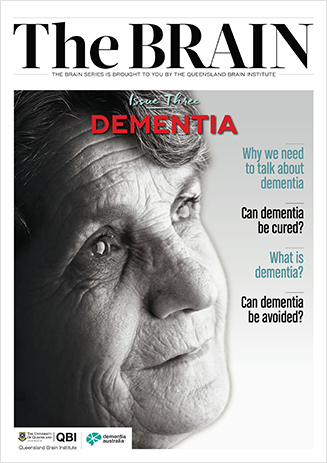
A non-invasive potential treatment for Alzheimer’s disease – the most common form of dementia – has been used safely on older brains, researchers from QBI have confirmed.
The research follows a previous breakthrough made by scientists led by Professor Jürgen Götz in QBI’s Clem Jones Centre for Ageing Dementia Research (CJCADR), which found that repeated treatments with ultrasound in mice were effective in removing toxic amyloid-β plaques from the brain and restoring memory functions, without the need for a therapeutic drug.
In the new study, older mice were safely treated with the same ultrasound technology, which reduced toxic amyloid-β plaques, said co-author Dr Gerhard Leinenga.
"All brains change with age, potentially making them more fragile. As Alzheimer’s is an age-related disease, we wanted to investigate whether our ultrasound technology is safe for use on older brains," said Dr Leinenga.
"The mice we treated in this study would be the human equivalent of 80 to 90 years old. With age, they are known to have cerebral amyloid angiopathy (CAA) – the build-up of toxic amyloid in blood vessels. CAA is thought to increase the risk of microbleeds in the brain."
Ultrasound technique confirmed safe in fragile brains
CJCADR Director Professor Jürgen Götz said the study found that in older, more fragile brains, the ultrasound technique was safe, and did not cause damage nor increase the risk of bleeding.
"This gives us confidence that our ultrasound approach is widely applicable to different ages and stages of disease, which is particularly encouraging as we move towards human clinical trials in the future," said Professor Götz.
Similar to the research conducted in 2015, treatment of older mice led to an activation of microglial cells that are thought to digest and remove the amyloid-β plaques that deposit and destroy brain cells.
Research from the team last year further showed that ultrasound alone cleared toxic tau protein clumps, but combining ultrasound with a single-chain fragment antibody treatment was more effective than either treatment alone in removing protein clumps and reducing Alzheimer’s symptoms in mice.
The study, "Safety and efficacy of scanning ultrasound treatment of aged APP23 mice", was published today in Frontiers in Neuroscience.
The Queensland Brain Institute, including the Clem Jones Centre for Ageing Dementia Research, receives funding from the Queensland Department of Environment and Science, the Federal government, and philanthropic donors including the Clem Jones Foundation.
For more information, contact communications@qbi.uq.edu.au




